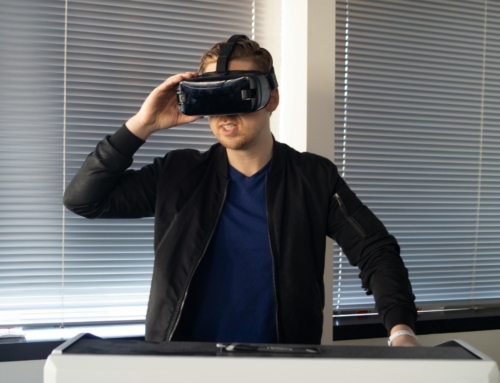
Virtual Campus Tours: The Ultimate Solution for Modern College Recruitment
The digital revolution has fundamentally changed how prospective students discover and evaluate colleges. In this new landscape, virtual campus tours have become the cornerstone of successful higher education marketing strategies. These immersive digital experiences are no longer optional enhancements but essential tools for institutions seeking to remain competitive in today’s recruitment environment.
As traditional campus visit models face increasing limitations, virtual campus tours offer unprecedented opportunities to showcase institutional strengths while overcoming geographic, financial, and logistical barriers that prevent many qualified students from experiencing campuses firsthand.
The Evolution of Campus Visits in Higher Education
Traditional campus visits have long been considered the gold standard for college recruitment. However, recent data reveals significant gaps in this approach. Studies indicate that nearly half of all college-bound students never visit their top-choice institutions before making enrollment decisions. This statistic becomes even more concerning when considering that campus visits historically correlate with higher enrollment rates.
Virtual campus tours address these limitations by creating accessible, engaging experiences that capture the essence of campus life without requiring physical presence. These digital solutions enable institutions to reach previously inaccessible student populations while providing current prospects with comprehensive campus exposure.
The shift toward digital-first recruitment strategies accelerated dramatically during recent global events, but the underlying trends were already in motion. Generation Z students, who represent the current college-bound demographic, expect seamless digital experiences across all aspects of their lives, including college exploration.
Technology Behind Effective Virtual Campus Tours
Modern virtual campus tours leverage sophisticated technology to create authentic, immersive experiences. High-resolution 360-degree photography captures every angle of campus spaces, from intimate study nooks in libraries to expansive views from residence hall windows. Professional-grade equipment ensures image quality that rivals in-person observations.
Interactive elements distinguish superior virtual campus tours from basic photo galleries. Clickable hotspots provide contextual information about academic programs, student services, and campus culture. These features transform passive viewing into active exploration, increasing engagement and information retention among prospective students.
Advanced virtual tour platforms incorporate multimedia elements that enhance storytelling capabilities. Video testimonials from current students, audio narration from faculty members, and embedded links to program-specific information create comprehensive digital experiences that address diverse prospect interests and questions.
Mobile optimization ensures virtual campus tours perform flawlessly across all devices. With smartphone usage dominating internet access among college-bound students, mobile compatibility directly impacts tour effectiveness and reach. Responsive design principles guarantee consistent experiences regardless of viewing platform.
Strategic Benefits for Higher Education Institutions
Virtual campus tours provide measurable advantages across multiple aspects of college recruitment and enrollment management. Geographic reach expansion represents one of the most significant benefits, enabling institutions to attract qualified prospects from previously inaccessible markets. International student recruitment particularly benefits from virtual tour implementation, as these tools eliminate travel barriers that historically limited global enrollment efforts.
Cost efficiency improvements result from reduced reliance on individual campus visits and printed marketing materials. While maintaining high-quality in-person tour programs, institutions can pre-qualify prospects through virtual experiences, ensuring that students who do visit campus arrive with genuine interest and informed expectations.
Virtual campus tours also support yield management efforts by maintaining engagement with admitted students during critical decision periods. Summer melt, the phenomenon where admitted students change enrollment plans, often occurs due to weakening connections with chosen institutions. Interactive virtual experiences help maintain emotional connections during these vulnerable periods.
Analytics capabilities provide valuable insights into prospect behavior and preferences. Institutions can track which campus areas generate the most interest, how long visitors spend exploring different spaces, and which interactive elements drive the highest engagement. This data informs broader marketing strategies and campus development priorities.
Best Practices for Virtual Tour Implementation
Successful virtual campus tours require strategic planning that extends beyond technical execution. Content strategy plays a crucial role in tour effectiveness, with the most successful implementations showcasing comprehensive campus experiences rather than focusing exclusively on academic buildings.
Storytelling elements significantly enhance virtual tour impact. Rather than presenting empty spaces, effective tours incorporate contextual narratives about student life, academic opportunities, and campus traditions. These stories help prospects envision themselves as community members rather than merely observers.
Regular content updates maintain tour accuracy and relevance. Campus improvements, seasonal changes, and new facilities should be reflected promptly in virtual content. Outdated tours can damage institutional credibility and create negative prospect experiences.
Integration with existing marketing channels maximizes virtual campus tours effectiveness. Email campaigns featuring tour links generate higher engagement rates than traditional promotional content. Social media integration enables easy sharing among prospect networks, expanding organic reach through peer recommendations.
Measuring Virtual Tour Success and ROI
Effective virtual campus tours generate measurable improvements across key enrollment metrics. Application volume increases typically range from 25% to 50% within the first year of implementation, with particularly strong gains in out-of-state and international prospect segments.
Conversion rate improvements reflect enhanced prospect qualification through virtual experiences. Students who complete virtual tours before campus visits demonstrate higher engagement levels and ask more informed questions during in-person interactions. This preparation leads to more productive visits and stronger enrollment outcomes.
Cost per enrollment reductions result from improved marketing efficiency and reduced reliance on expensive recruitment travel. While virtual campus tours require initial investment, the ongoing cost per prospect engagement decreases significantly compared to traditional recruitment methods.
Brand perception enhancements represent additional valuable outcomes. Institutions implementing high-quality virtual tours position themselves as innovative and student-centered, qualities that resonate strongly with prospective students and their families.
Future Trends in Virtual Campus Experiences
Emerging technologies promise to make virtual campus tours even more engaging and realistic. Augmented reality integration will enable prospects to visualize personalized campus experiences, such as seeing their name on residence hall doors or viewing customized academic pathways.
Artificial intelligence applications will create personalized tour experiences based on individual prospect interests and academic goals. Machine learning algorithms will optimize tour content and navigation based on user behavior patterns, creating increasingly effective engagement tools.
Virtual reality capabilities will provide fully immersive campus experiences that closely replicate physical visits. As VR technology becomes more accessible, virtual campus tours will offer unprecedented realism and engagement potential.
Live virtual tour options combine digital accessibility with real-time interaction. Guided virtual experiences led by current students or admissions counselors create personal connections while maintaining geographic accessibility.
Industry Impact and Competitive Advantages
Institutions investing in professional virtual campus tours gain significant competitive advantages in crowded higher education markets. These tools differentiate forward-thinking colleges from competitors relying on outdated marketing approaches.
Student expectations continue evolving toward digital-first experiences. Institutions failing to provide comprehensive virtual campus access risk being perceived as outdated or unresponsive to student needs. This perception gap can significantly impact enrollment outcomes.
Virtual campus tours also support diversity and inclusion initiatives by removing barriers that disproportionately affect underrepresented student populations. Financial constraints, geographic isolation, and family obligations often prevent qualified diverse students from visiting campuses. Virtual tours ensure these prospects can fully evaluate institutional fit and opportunities.
Professional Implementation Considerations
Creating effective virtual campus tours requires professional expertise and specialized equipment. While basic virtual tour tools exist, institutions seeking maximum impact benefit from partnering with experienced providers who understand higher education marketing nuances.
Professional virtual tour creators bring technical skills, creative vision, and industry knowledge that optimize tour effectiveness. They understand which campus spaces generate the strongest emotional responses, how to incorporate compelling storytelling elements, and which technical features enhance rather than complicate user experiences.
Investment in professional virtual campus tours typically generates positive returns within the first enrollment cycle. The combination of increased applications, improved conversion rates, and reduced marketing costs creates compelling financial justification for quality virtual tour implementation.
Conclusion
Virtual campus tours represent a fundamental shift in higher education marketing, offering institutions powerful tools to expand reach, improve engagement, and increase enrollment from qualified prospects. As digital expectations continue rising and competition for students intensifies, these immersive experiences have evolved from innovative enhancements to essential recruitment tools.
Institutions that embrace professional virtual campus tours position themselves for sustained success in an increasingly digital higher education landscape. The technology exists today to create compelling virtual experiences that inspire prospective students to envision their futures at your institution.
The question is no longer whether to implement virtual campus tours, but how quickly institutions can deploy these powerful recruitment tools to gain competitive advantages in their markets. The future of college recruitment is here, and it begins with exceptional virtual campus tours that bring your institution to life for prospects worldwide.






